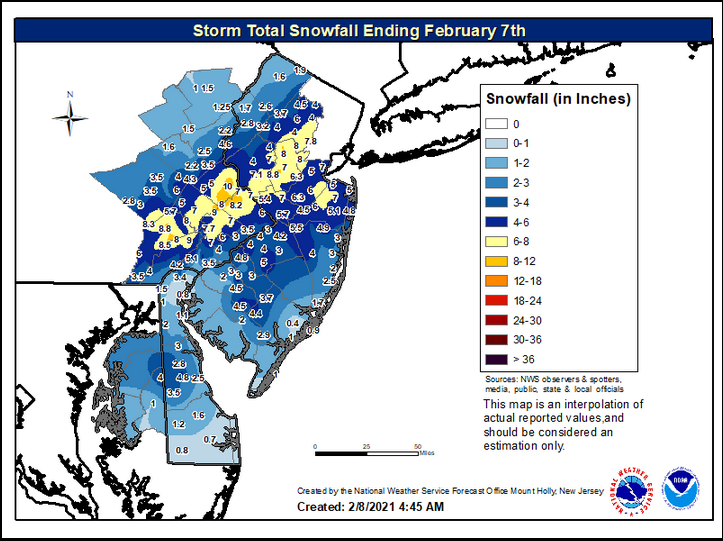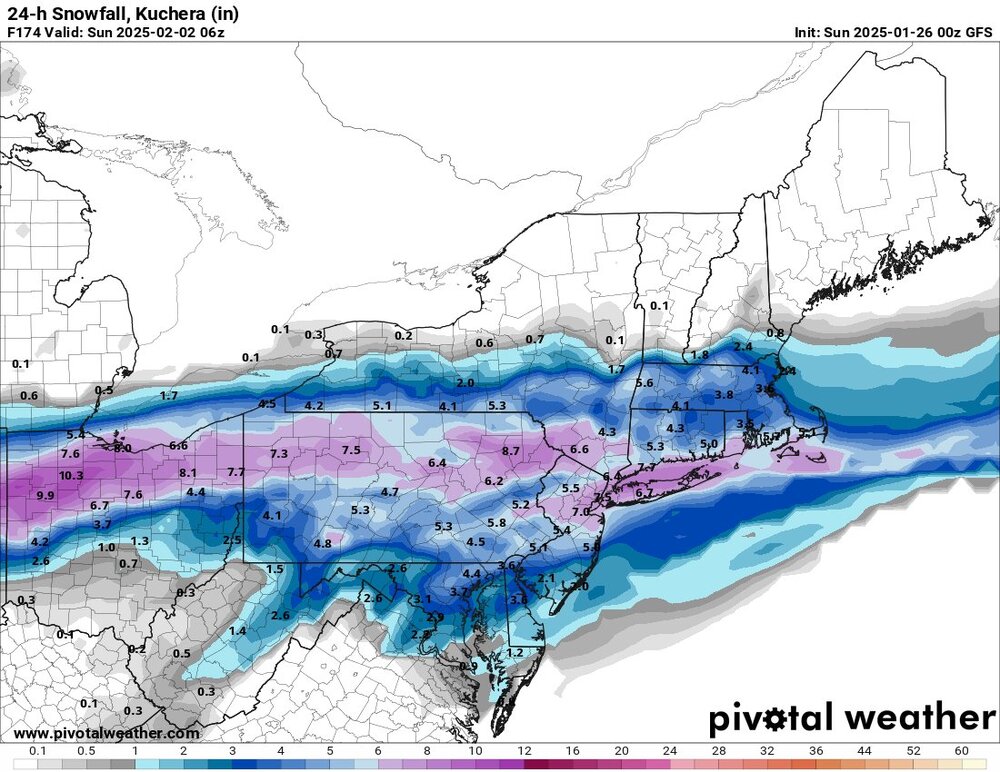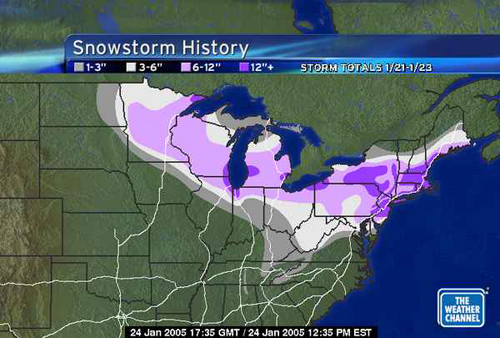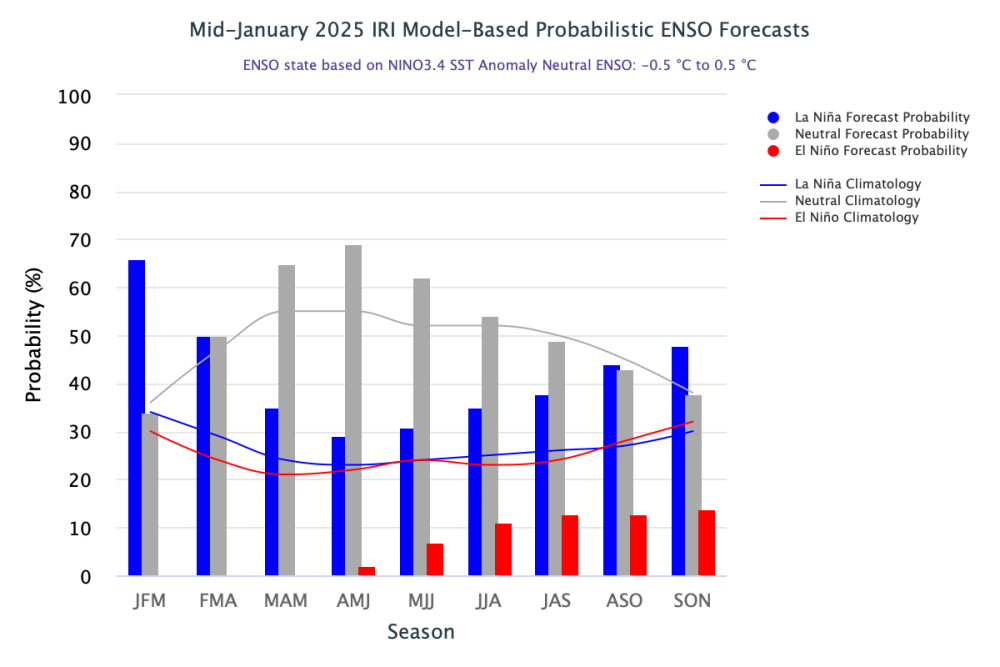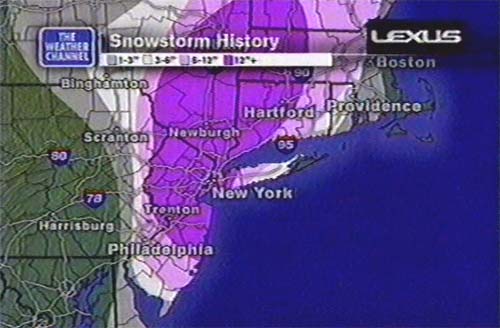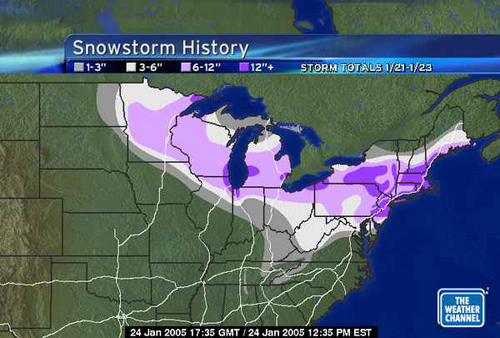
PhiEaglesfan712
Members-
Posts
1,056 -
Joined
-
Last visited
Content Type
Profiles
Blogs
Forums
American Weather
Media Demo
Store
Gallery
Everything posted by PhiEaglesfan712
-
E PA/NJ/DE Winter 2024/25 Obs/Discussion
PhiEaglesfan712 replied to JTA66's topic in Philadelphia Region
-
E PA/NJ/DE Winter 2024/25 Obs/Discussion
PhiEaglesfan712 replied to JTA66's topic in Philadelphia Region
What effects will this have on our parade in a few weeks? -
You can see the script playing out: Brandon Graham winning a 2nd Super Bowl title in his final game, while Carson Wentz watches on the sideline as his former team wins the Super Bowl quarterbacked by his former backup.
-
2024-2025 La Nina
PhiEaglesfan712 replied to George001's topic in Weather Forecasting and Discussion
We do have precedent for that, and not too long ago. In 2022, we had a la nina that peaked in between seasons. 2021-22 RONI: JAS 2021 -0.71 ASO 2021 -0.92 SON 2021 -1.06 OND 2021 -1.23 NDJ 2021 -1.24 DJF 2022 -1.21 JFM 2022 -1.21 FMA 2022 -1.28 MAM 2022 -1.34 AMJ 2022 -1.22 MJJ 2022 -0.98 JJA 2022 -0.90 -
2024-2025 La Nina
PhiEaglesfan712 replied to George001's topic in Weather Forecasting and Discussion
I don't think we got an official la nina in 1996-97. 1995-96 was the la nina, which of course was an epic snow season. 1996 also had snow events in March and early April. That said, those were +PDO years, and neither year is good analog for this year. Of course, in spring 1997 brought the super el nino that ended up being the finale of the +PDO era. -
E PA/NJ/DE Winter 2024/25 Obs/Discussion
PhiEaglesfan712 replied to JTA66's topic in Philadelphia Region
The GFS shows a possible snowstorm in the Feb 9-11 timeframe. After that looks like great weather for a parade. -
2024-2025 La Nina
PhiEaglesfan712 replied to George001's topic in Weather Forecasting and Discussion
If we're going to have an el nino next year, then the la nina has to retreat very soon. Both 2005-06 and 2008-09 la ninas reached peak values in DJF. 2005-06 RONI OND 2005 -0.50 NDJ 2005 -0.84 DJF 2006 -0.93 JFM 2006 -0.88 FMA 2006 -0.65 MAM 2006 -0.41 2008-09 RONI OND 2008 -0.60 NDJ 2008 -0.79 DJF 2009 -0.89 JFM 2009 -0.84 FMA 2009 -0.67 MAM 2009 -0.42 If you want the PDO to change any time soon, it's probably best to root for a continued la nina or ENSO neutral season in 2025-26. A flip to el nino after a late peaking la nina has historically flipped back to strong la nina in year 2 (see 2007-08 and 2010-11). I'm almost sure we aren't going +PDO if we have a strong la nina in 2026-27. -
My mom is 65 in May, so if the Bills were to win a Super Bowl in her lifetime, it almost has to be during the Josh Allen era. Yeah, I couldn't handle being a Bills fan. I don't think I could be able to handle losing 4 Super Bowls in a row. Heck, the Eagles losing the Super Bowl the way they did 2 years ago was crushing to me. I don't know if I could take another loss to the Chiefs. The Bills right now reminds me of the 2000-03 Eagles, before we got over the hump and made it to the Super Bowl in 2004.
-
My mom is a Bills fan since the Jim Kelly era, when they lost the 4 straight Super Bowls. I'm convinced they are cursed, and they won't actually win a Super Bowl until after my mom passes.
-
2024-2025 La Nina
PhiEaglesfan712 replied to George001's topic in Weather Forecasting and Discussion
It gets better: -
E PA/NJ/DE Winter 2024/25 Obs/Discussion
PhiEaglesfan712 replied to JTA66's topic in Philadelphia Region
-
2024-2025 La Nina
PhiEaglesfan712 replied to George001's topic in Weather Forecasting and Discussion
Looks like we're headed for a continuing la nina, a la spring 2022, rather than a flip to el nino like 2006 and 2009. In those years, the la nina had already peaked by February, setting the stage for an el nino to form the following season. -
2024-2025 La Nina
PhiEaglesfan712 replied to George001's topic in Weather Forecasting and Discussion
Too early to tell, but tea leaves say a 2nd year la nina is more likely. Either that or an ENSO neutral season. The IRI wouldn't have such high odds on a la nina this early in the ballgame. -
E PA/NJ/DE Winter 2024/25 Obs/Discussion
PhiEaglesfan712 replied to JTA66's topic in Philadelphia Region
I still think the first 10-15 days of February will be snowy, but I have a feeling this winter will come to an end fairly early. Watch us get something like spring 2010, where March was warm and the first half of April was summerlike. -
1/19/25 Eagles Playoff Winter Storm obs
PhiEaglesfan712 replied to Ralph Wiggum's topic in Philadelphia Region
It was 20 years ago today. The last snow playoff game before this one, the Philadelphia Eagles defeated the Atlanta Falcons in the NFC Championship Game. -
2024-2025 La Nina
PhiEaglesfan712 replied to George001's topic in Weather Forecasting and Discussion
20 years ago, the clipper turned Nor'easter: Prior to Sunday, this was the last time the Philadelphia Eagles played in a snow game in the playoffs. They defeated the Atlanta Falcons in the NFC Championship Game, to reach Super Bowl XXXIX. -
2024-2025 La Nina
PhiEaglesfan712 replied to George001's topic in Weather Forecasting and Discussion
-
2024-2025 La Nina
PhiEaglesfan712 replied to George001's topic in Weather Forecasting and Discussion
Yeah, I had no idea it could snow in places like New Orleans and Jacksonville, lol. -
2024-2025 La Nina
PhiEaglesfan712 replied to George001's topic in Weather Forecasting and Discussion
Very bad for winter lovers in the SE, but this should be good for the mid-Atlantic and especially NE, which should have above average precip for the first half of Feb. -
Sunday 1/19 Eagles Game Snow and Stuff
PhiEaglesfan712 replied to Ralph Wiggum's topic in Philadelphia Region
Last Conference Championship Game appearance Texans - None (first season of operation was 2002) Browns - 1989 Dolphins - 1992 Cowboys - 1995 -
Sunday 1/19 Eagles Game Snow and Stuff
PhiEaglesfan712 replied to Ralph Wiggum's topic in Philadelphia Region
January 27, 2011 is one. I can't remember if there has been any since then. -
2024-2025 La Nina
PhiEaglesfan712 replied to George001's topic in Weather Forecasting and Discussion
Eagles snow game, I'm so excited! -
Sunday 1/19 Eagles Game Snow and Stuff
PhiEaglesfan712 replied to Ralph Wiggum's topic in Philadelphia Region
I've seen 6. I just missed out 87 and 88, which would have been 8. The 2005 one, of course, was the NFC Championship Game against the Falcons. -
The 2013 one is the closest to the conditions we will have on Sunday. That was the famous LeSean McCoy snow game, and Stafford's passing numbers were down that day, for what it's worth.
-
Sunday 1/19 Eagles Game Snow and Stuff
PhiEaglesfan712 replied to Ralph Wiggum's topic in Philadelphia Region
Eagles postseason snowstorms (2000-present) Wild Card 2000 vs. Tampa Bay Buccaneers 2004 NFC Championship vs. Atlanta Falcons (clipper turned Nor'easter)

